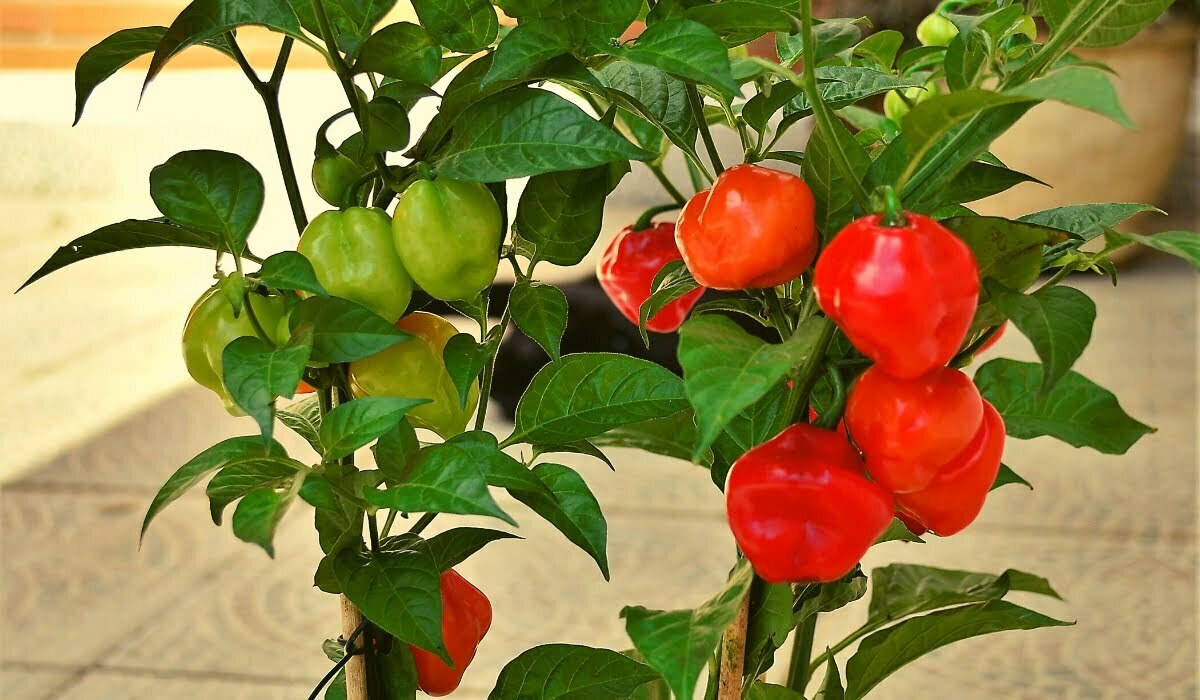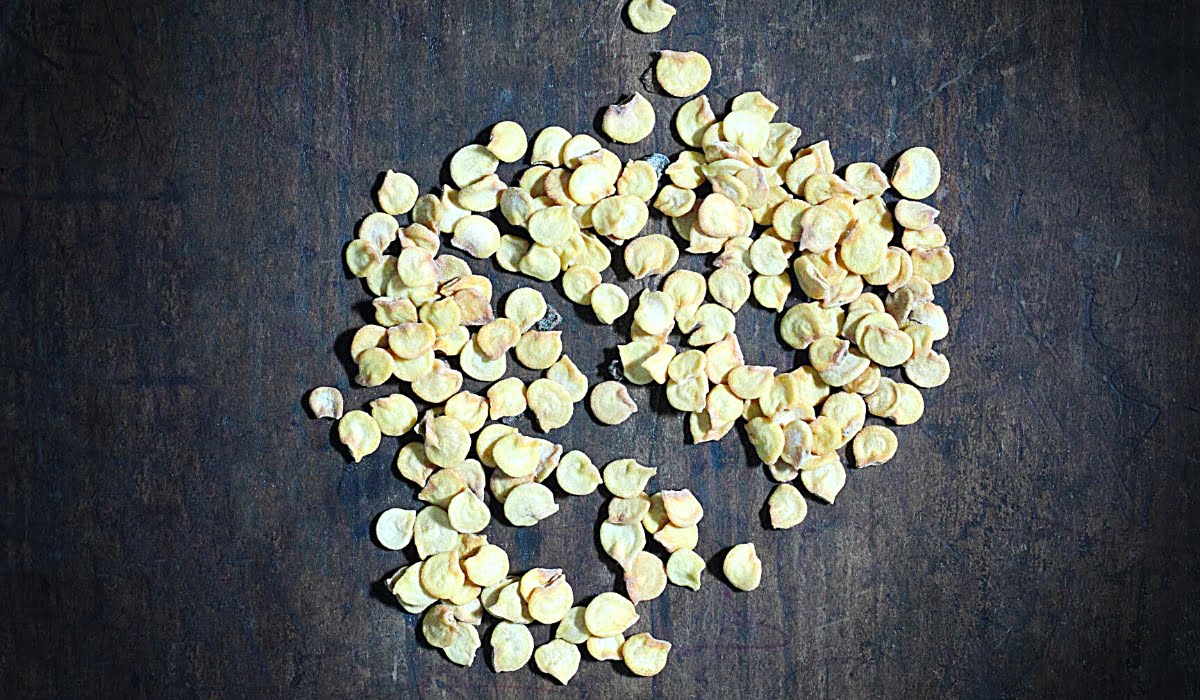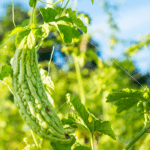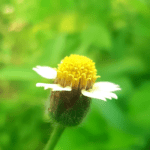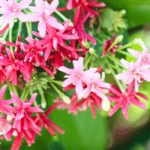Benefits of Growing Capsicum Plants in Your Own Garden
Capsicum, also known as bell pepper or shimla mirch, is a versatile and nutritious vegetable that can be easily grown in your own garden. By cultivating capsicum plants, you can enjoy a range of benefits that include:
- Fresh and Flavorful Produce: Growing your own capsicum allows you to enjoy the freshest and most flavorful peppers possible. The vibrant colors and rich taste of homegrown capsicum are unparalleled.
- Cost-Effective: By eliminating the need to purchase capsicum from the market, you can save money in the long run. Capsicum plants are relatively low-maintenance and can provide a bountiful harvest with proper care.
- Health Benefits: Capsicum is a rich source of essential vitamins and minerals, including vitamin C, vitamin A, and potassium. Incorporating capsicum into your diet can boost your immune system, promote healthy skin, and support overall well-being.
- Organic and Chemical-Free: When you grow capsicum at home, you have control over the cultivation process. You can avoid harmful pesticides and chemicals, ensuring that your capsicum is free from unwanted residues.
- Gardening Experience: Growing capsicum plants can be a rewarding and educational experience. It allows you to connect with nature, develop gardening skills, and enjoy the satisfaction of nurturing your own food.
Now that you understand the benefits of growing capsicum, let’s dive into the details of cultivating these plants.
Understanding Capsicum Plants
What are Capsicum Plants?
Capsicum plants belong to the Solanaceae family and are native to the Americas. They are herbaceous annuals that produce vibrant and fleshy fruits known as peppers. Capsicum plants come in various colors, including green, yellow, red, and even purple. These peppers are widely used in Indian cuisine for their distinct flavor and culinary versatility.
Different Varieties of Capsicum Suitable for Indian Climate
In India, there are several capsicum varieties that thrive in the local climate. Here are some popular ones:
Bell Peppers:
Also known as Sweet Peppers, bell peppers are mild in flavor and available in different colors. They are versatile in cooking and can be enjoyed raw in salads, stir-fries, or stuffed with fillings.
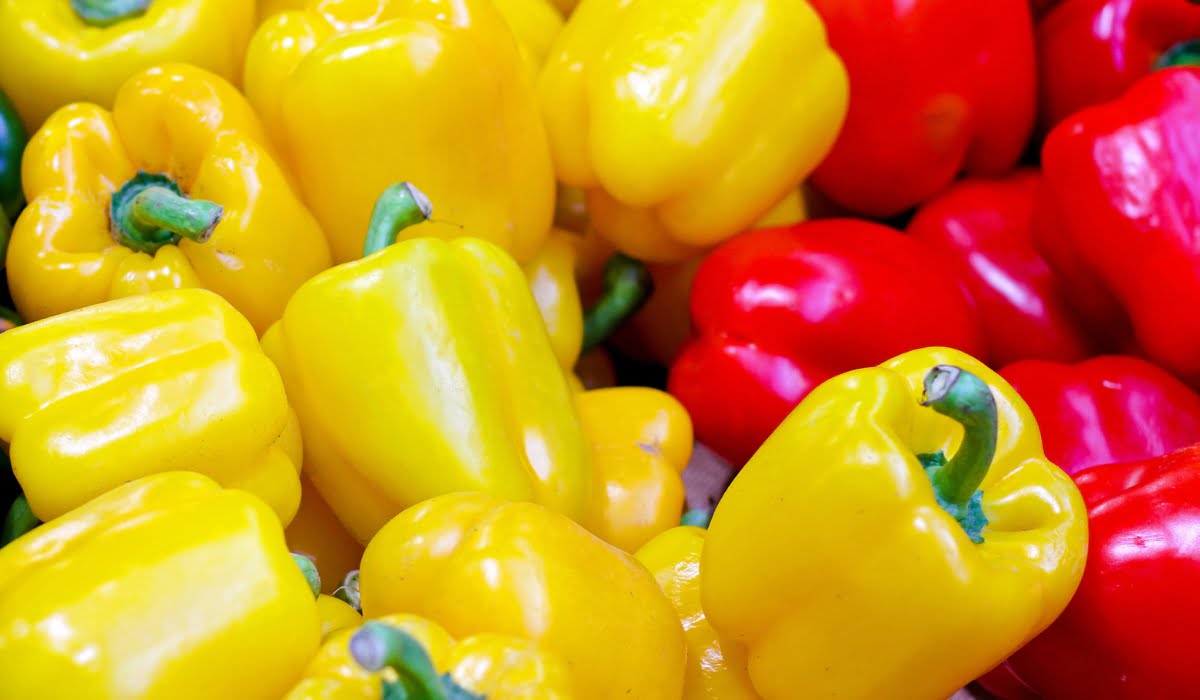
Shimla Mirch:
Shimla mirch is a popular variety of capsicum in India. It is known for its crisp texture and vibrant red color. Shimla mirch adds a sweet and tangy flavor to dishes and is widely used in curries, sabzis, and pickles.
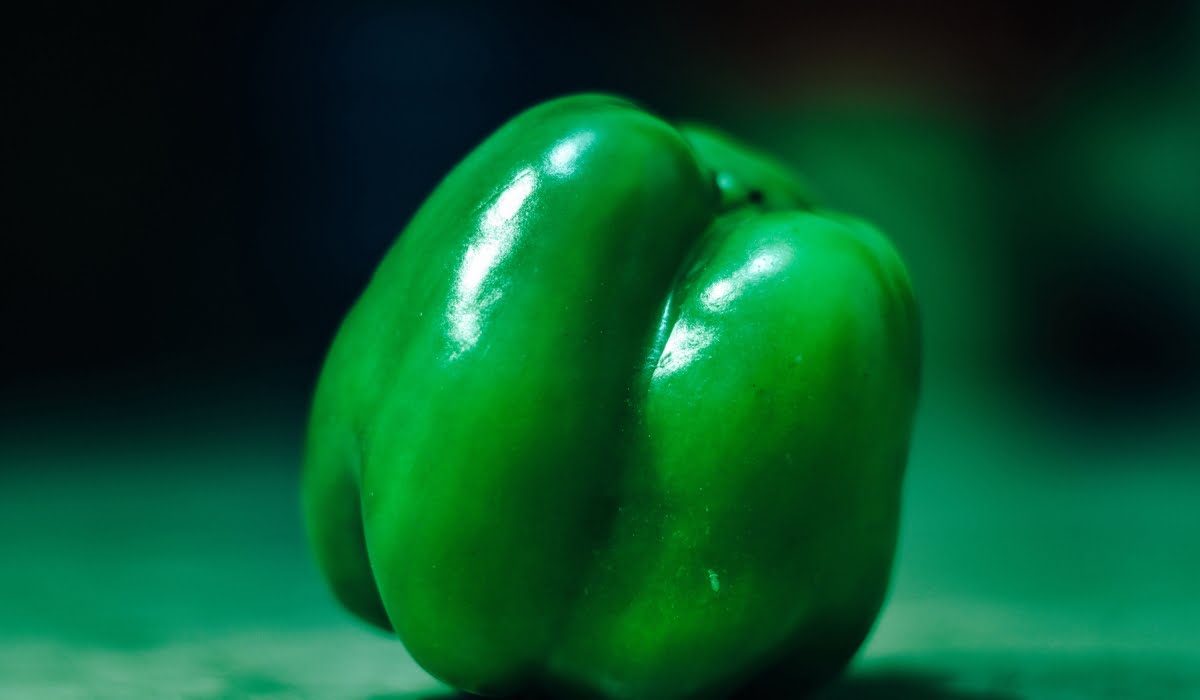
Paprika:
Paprika peppers are typically dried and ground into a powdered spice. They add a smoky and mildly spicy flavor to dishes, making them a common ingredient in Indian cuisine.
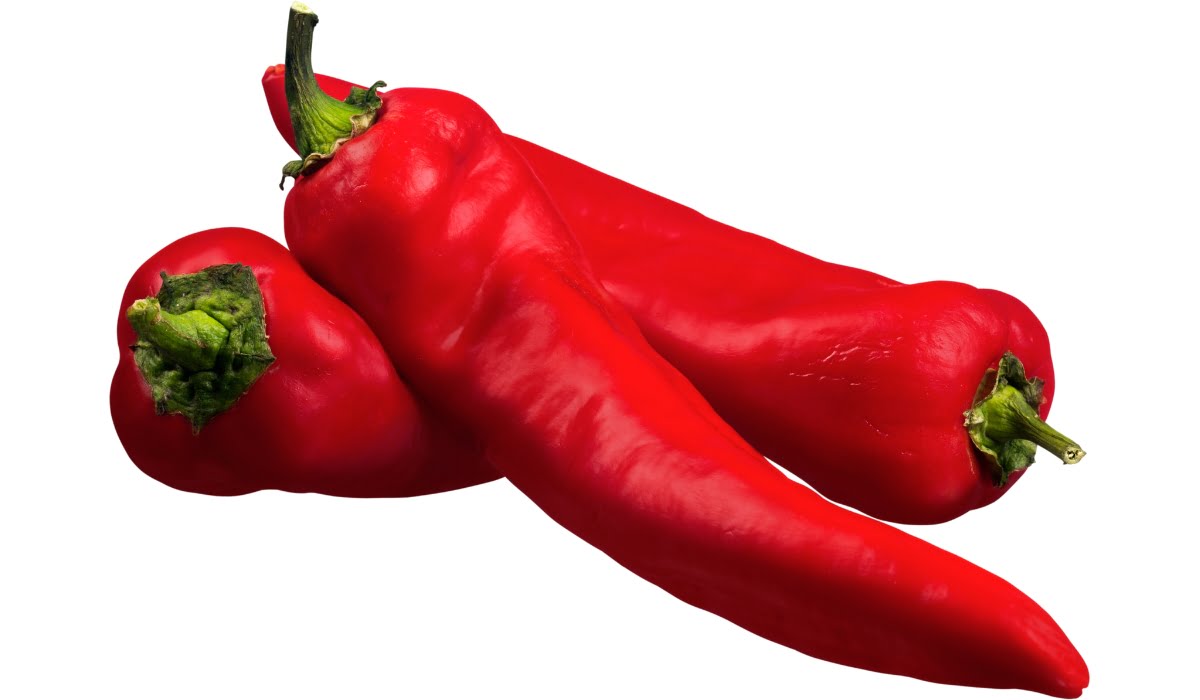
Choosing the Right Capsicum Seeds or Seedlings
When starting your capsicum garden, you have the option to grow from seeds or purchase seedlings from nurseries. Here are some considerations when choosing seeds or seedlings:
- Seeds: If you choose to grow from seeds, ensure that you select high-quality seeds from a reliable source. Look for varieties suitable for your climate and pay attention to their germination rates.

- Seedlings: If you prefer a head start, opt for healthy and disease-free seedlings from a trusted nursery. Select seedlings that have strong stems, lush foliage, and no signs of pests or diseases.

Proper selection of seeds or seedlings sets the foundation for successful capsicum cultivation. Now, let’s move on to preparing your garden.
Preparing Your Garden
Selecting an Ideal Location for Capsicum Plants
Capsicum plants thrive in warm and sunny locations, making it essential to choose the right spot in your garden. Here are some factors to consider:
- Sunlight: Capsicum plants require at least 6-8 hours of direct sunlight daily. Choose a location that receives ample sunlight throughout the day.
- Protection from Wind: Strong winds can damage capsicum plants, so select a sheltered spot or use windbreaks to shield them.
- Spacing: Ensure that there is sufficient space between capsicum plants to allow for air circulation and prevent overcrowding.
Soil Preparation for Healthy Growth
Capsicum plants prefer well-draining soil with a pH range of 6.0-7.0. Here’s how you can prepare the soil for optimal growth:
- Loosen the Soil: Use a garden fork or tiller to loosen the soil to a depth of about 12-15 inches. This improves aeration and root penetration.
- Organic Matter: Incorporate organic matter such as compost or well-rotted manure into the soil. This enriches the soil with nutrients and enhances its moisture-holding capacity.
- Soil Testing: Conduct a soil test to determine the nutrient levels and pH of your soil. Adjust the pH if necessary by adding lime or sulfur as recommended by the test results.
Tips for Proper Drainage and Moisture Retention
To ensure that your capsicum plants receive adequate water without waterlogging the soil, consider the following tips:
- Drainage: Avoid waterlogged conditions by ensuring proper drainage in your garden. If your soil has poor drainage, consider raised beds or adding organic matter to improve it.
- Watering Techniques: Water capsicum plants deeply but infrequently. Aim to water the plants when the top inch of soil feels dry. Avoid overwatering, as it can lead to root rot and other diseases.
- Mulching: Apply a layer of organic mulch, such as straw or wood chips, around the base of the plants. Mulching helps retain moisture, suppresses weed growth, and regulates soil temperature.
Sunlight Requirements for Capsicum Plants
Capsicum plants require ample sunlight for proper growth and fruit production. Here’s what you need to know about providing adequate sunlight:
- Full Sun Exposure: Capsicum plants thrive in full sun, which means they should receive at least 6-8 hours of direct sunlight each day.
- Choosing the Right Spot: Select a location in your garden that offers the maximum amount of sunlight. Avoid areas shaded by trees, buildings, or other structures.
- Sunlight Protection: If you live in an area with intense heat or scorching sun, provide partial shade during the hottest part of the day to prevent sunburn on the leaves and fruits.
Now that you have prepared your garden, it’s time to move on to planting capsicum.
Planting Capsicum
Germinating Capsicum Seeds Indoors
To ensure a successful germination process, follow these steps for germinating capsicum seeds indoors:
- Seed Starting Trays: Fill seed starting trays with a seed starting mix or a well-draining potting mix. Moisten the soil before sowing the seeds.
- Sowing Seeds: Plant the capsicum seeds about 1/4 to 1/2 inch deep in the soil. Space the seeds approximately 2 inches apart.
- Moisture and Warmth: Cover the trays with a plastic dome or plastic wrap to create a humid environment. Place the trays in a warm location with a temperature of around 70-80°F (21-27°C).
- Germination Time: Capsicum seeds typically germinate within 7-14 days. During this period, ensure that the soil remains moist but not waterlogged.
Transplanting Seedlings into Your Garden

Once the capsicum seedlings have grown and developed their first true leaves, they are ready for transplanting. Follow these steps for successful transplantation:
- Harden Off Seedlings: Before transplanting, gradually acclimate the seedlings to outdoor conditions by placing them in a sheltered location for a few hours each day. Gradually increase the exposure over a week.
- Timing: Transplant seedlings when all risks of frost have passed, and the soil temperature has reached a minimum of 60°F (15°C).
- Digging Holes: Dig holes in the garden that are slightly larger than the root ball of the seedlings. Space the holes according to the recommended spacing for the specific capsicum variety.
- Transplanting: Gently remove the seedlings from the trays, being careful not to damage the roots. Place each seedling in a hole and backfill with soil, ensuring that the soil is firm around the roots.
- Watering: After transplanting, water the seedlings thoroughly to settle the soil and eliminate air pockets around the roots.
- Support and Staking: If you’re growing taller capsicum varieties or expect heavy fruit load, consider providing support or staking to prevent the plants from toppling over.
Now that you have planted your capsicum plants, it’s crucial to provide optimal care to ensure their healthy growth.
Providing Optimal Care
Watering Techniques for Capsicum Plants
Proper watering is crucial for the healthy growth of capsicum plants. Here are some watering techniques to follow:
- Consistent Moisture: Capsicum plants require consistent moisture, but avoid overwatering or waterlogging the soil. Aim to keep the soil evenly moist, not soggy.
- Deep Watering: Water deeply, allowing the water to penetrate the root zone. Shallow watering can lead to shallow root development and weaker plants.
- Frequency: Water the plants when the top inch of soil feels dry. This can vary depending on the weather and soil conditions, so monitor the moisture levels regularly.
- Morning Watering: Water capsicum plants in the morning to allow the foliage to dry during the day. Wet leaves overnight can increase the risk of fungal diseases.
Fertilizing Capsicum Plants for Nutrient-Rich Soil
To promote healthy growth and maximize yields, it’s essential to provide proper nutrition to your capsicum plants. Here’s what you need to know about fertilizing:
- Soil Testing: Conduct a soil test to determine the nutrient levels and pH of your soil. Based on the results, choose a balanced fertilizer or organic amendments to address any deficiencies.
- Slow-Release Fertilizers: Incorporate slow-release fertilizers into the soil during planting or use organic fertilizers such as compost or well-rotted manure.
- Regular Feeding: Supplement the soil’s nutrients by applying a balanced water-soluble fertilizer every 4-6 weeks during the growing season.
- Avoid Overfertilizing: Follow the recommended dosage and avoid overfertilizing, as it can lead to excessive vegetative growth with fewer fruits.
- Using Epsom Salt and NPK 00:52:34: At Shehri Kisaan, we have had very good success using a mix of Epsom Salt and NPK 00:52:34 on our chilli plants.
Mulching to Retain Moisture and Suppress Weeds
Mulching around your capsicum plants offers several benefits, including moisture retention and weed suppression. Here’s how to effectively mulch your plants:
- Mulch Materials: Use organic mulch materials such as straw, wood chips, or dried leaves. Avoid using thick layers of grass clippings, as they can become compacted and hinder airflow.
- Application: Apply a layer of mulch around the base of the plants, leaving a small gap around the stems to prevent moisture-related diseases.
- Mulch Depth: Maintain a mulch layer of 2-3 inches to help retain soil moisture and regulate temperature.
- Weed Control: Mulch acts as a natural weed barrier, suppressing weed growth and reducing competition for nutrients and water.
Pruning and Training Capsicum Plants
Pruning and training your capsicum plants can improve air circulation, increase sunlight penetration, and promote better fruit development. Here are some tips for pruning and training:
- Pinching: Pinch off the early flowers that appear on young plants to encourage stronger root development and more robust growth.
- Suckers and Side Shoots: Regularly remove suckers (small shoots that emerge from leaf axils) and side shoots that form in the crotch between the main stem and branches. This focuses the plant’s energy on fruit production.
- Support and Staking: If you’re growing taller capsicum varieties or expect heavy fruit load, provide support or staking to prevent the plants from bending or breaking under the weight. Use soft ties or twine to secure the plants.
- Pruning Diseased or Damaged Parts: Remove any diseased, damaged, or dead foliage or fruits promptly to prevent the spread of diseases and maintain plant health.
By following these care practices, you can ensure healthy and productive capsicum plants in your garden.
Dealing with Common Pests and Diseases
Common Pests Affecting Capsicum Plants
Capsicum plants are susceptible to various pests. Here are some common ones and how to manage them:
- Aphids: Use a strong spray of water to dislodge aphids from the plants. You can also introduce beneficial insects like ladybugs or use insecticidal soap or neem oil.
- Whiteflies: Yellow sticky traps can help control whiteflies. Prune and dispose of heavily infested leaves, and use insecticidal soap or neem oil as necessary.
- Thrips: Monitor plants for thrips and remove infested leaves. Introduce natural predators like predatory mites or use insecticidal soap or neem oil.
- Fruit Borers: Check the fruits regularly for entry holes or larvae. Remove and destroy infested fruits. You can also wrap the fruits with lightweight insect netting to prevent infestation.
Common Diseases Affecting Capsicum Plants
Capsicum plants are susceptible to certain diseases. Here are some common ones and how to manage them:
- Bacterial Spot: Rotate crops, avoid overhead watering, and remove and destroy infected plant parts. Copper-based fungicides can be used as a preventive measure.
- Powdery Mildew: Improve air circulation, avoid overhead watering, and remove and destroy affected foliage. Use fungicides if necessary.
- Blossom End Rot: Ensure consistent watering to avoid fluctuations in soil moisture. Maintain proper calcium levels in the soil and apply calcium-rich amendments if needed.
- Anthracnose: Practice crop rotation, remove and destroy infected plant parts, and use copper-based fungicides.
Harvesting and Storing Capsicum
Harvesting Capsicum Fruits
Capsicum fruits are ready for harvest when they have reached their mature size and color. Here’s how to harvest them properly:
- Mature Size: Harvest capsicum fruits when they have reached their desired size. This can vary depending on the variety. Generally, green bell peppers can be harvested when they are firm and crisp, while colored varieties are harvested when fully ripe and have developed their characteristic color.
- Pruning Shears or Knife: Use pruning shears or a sharp knife to cut the fruit from the plant, leaving a short stem attached.
- Handle with Care: Handle capsicum fruits gently to avoid bruising or damaging them.
Storing Capsicum Fruits
Capsicum fruits can be stored for a short period if handled and stored properly. Follow these tips for storing capsicum:
- Short-Term Storage: Store capsicum fruits in a cool, dry place such as the refrigerator for up to 1-2 weeks. Place them in a perforated plastic bag or wrap them in a paper towel to prevent moisture buildup.
- Freezing: Capsicum can be frozen for longer storage. Wash, cut into desired sizes, remove seeds and membranes, and blanch the pieces in boiling water for a few minutes. Cool them quickly in ice water, drain, and pack in airtight containers or freezer bags. Frozen capsicum can be used in cooked dishes.
Capsicum, or bell peppers, are a delightful addition to any garden. With proper care and attention, you can enjoy a bountiful harvest of these vibrant and flavorful fruits.
FUN FACT: Pepper is one of the richest sources of Vitamin C (more than oranges).
Frequently Asked Questions (FAQs)
Can Capsicum Plants Grow in Containers?
Yes, capsicum plants can be successfully grown in containers. Choose a container that is at least 12 inches deep with drainage holes. Fill it with a well-draining potting mix and place it in a sunny location. Ensure that the container receives adequate water and nutrients, and you can enjoy growing capsicum even in limited space.
How Long Does It Take for Capsicum Plants to Bear Fruit?
The time it takes for capsicum plants to bear fruit can vary depending on the variety, growing conditions, and care provided. Generally, capsicum plants start producing fruits around 60-80 days after transplanting. However, some varieties may take longer or shorter periods. Regularly monitor your plants and be patient as they develop.
What Are Some Common Capsicum Plant Problems and Solutions?
Some common problems that capsicum plants may encounter include pests, diseases, nutrient deficiencies, and environmental stress. Here are a few solutions:
- Pests: Identify the pest causing the issue and apply appropriate pest control methods mentioned earlier in this article.
- Diseases: Follow good cultural practices, maintain proper hygiene, and treat diseases with appropriate fungicides or other organic remedies.
- Nutrient Deficiencies: Monitor the plant’s growth and appearance for signs of nutrient deficiencies. Adjust fertilization accordingly, and consider soil amendments or foliar sprays to address specific deficiencies.
- Environmental Stress: Ensure proper watering, provide adequate sunlight, protect plants from extreme weather conditions, and maintain optimal growing conditions to minimize stress on the plants.
Can I Save Seeds from My Capsicum Plants for Future Planting?
Yes, you can save seeds from your capsicum plants for future planting. Choose fully mature and healthy fruits for seed saving. Cut open the fruits, remove the seeds, and rinse them in water to remove any pulp. Dry the seeds thoroughly in a well-ventilated area for a few days. Once dry, store them in a cool, dry place in labeled envelopes or containers. Remember to only save seeds from open-pollinated or heirloom varieties to ensure the seedlings retain the characteristics of the parent plant.
How to grow capsicum at home in a pot?
Growing capsicum in pots is a convenient way to enjoy fresh peppers right at home. Start by selecting a suitable pot with good drainage. Fill it with well-draining soil mix and sow capsicum seeds or transplant seedlings. Place the pot in a sunny location and water regularly, ensuring the soil remains moist but not waterlogged. Provide support as the plant grows and apply organic fertilizer every few weeks. With proper care, you can successfully grow capsicum in a pot.
How to grow red peppers at home?
Growing red peppers at home is a delightful endeavor. Choose a sunny spot in your garden with fertile, well-draining soil. Start by sowing the seeds or transplanting seedlings, ensuring proper spacing. Water the plants regularly, especially during dry periods. Apply organic fertilizer to promote healthy growth. As the peppers develop, monitor for pests and diseases and take appropriate measures. Harvest the peppers when they turn red and reach the desired size. Enjoy the flavorful rewards of your homegrown red peppers.
How to grow capsicum at home from seeds?
Growing capsicum from seeds is a rewarding experience. Start by filling seed trays with a seed-starting mix and sow the capsicum seeds at the recommended depth. Keep the trays in a warm and well-lit area, ensuring the soil remains moist. Once the seedlings have grown a few inches tall, transplant them into individual pots or your garden. Provide adequate sunlight, water, and nutrients to support their growth.
How to make bell peppers grow faster?
To promote faster growth of bell peppers, ensure they receive sufficient sunlight, at least 6-8 hours per day. Optimize soil conditions by incorporating organic matter and providing regular watering. Apply balanced fertilizer according to the recommended dosage. Pruning the plants can also stimulate growth. Remove any diseased leaves or fruits promptly to maintain plant health. Consistent care and favorable growing conditions will help bell peppers thrive and grow faster.
How to grow bell peppers for beginners?
Growing bell peppers is an excellent choice for beginners in gardening. Start by selecting healthy seedlings or seeds from a reliable source. Choose a sunny location with well-draining soil. Prepare the soil by adding compost or organic matter. Plant the seedlings at the recommended spacing, ensuring adequate water and sunlight. Regularly monitor for pests and diseases, and provide support to the plants as they grow. With proper care and attention, beginners can successfully grow bell peppers.
How to grow red peppers indoors?
Growing red peppers indoors allows you to enjoy their vibrant color and flavor year-round. Select compact pepper varieties suitable for indoor cultivation. Provide them with a well-draining potting mix and place them near a sunny window or under grow lights. Maintain a consistent temperature and humidity level, and water the plants when the soil feels dry. Fertilize regularly with a balanced liquid fertilizer. Pollinate the flowers manually by gently shaking the plants. With proper care, you can grow red peppers successfully indoors.
Can we grow green chillies at home as per Vastu?
According to Vastu, growing green chillies at home is believed to bring positive energy and prosperity. Green chillies are easy to grow and require similar conditions as other peppers. Provide them with ample sunlight, well-draining soil, and regular watering. Follow proper spacing and provide support as the plants grow. Green chillies add spice and flavor to various dishes and can be a rewarding addition to your home garden.
Please note that these answers are provided as general guidelines, and it’s important to adapt them to your specific growing conditions and preferences.
Conclusion
We’ve looked at growing capsicum plants in your own yard. We began by learning about capsicum plants and discussing the several types appropriate for the Indian environment. We learnt how to select the best seeds or seedlings and how to prepare the garden for maximum development. The planting procedure, maintenance practises, and methods for protecting capsicum plants from pests and diseases were all thoroughly discussed. We also spoke about the best ways to harvest and store capsicum fruits.
Happy Gardening and Enjoy Your Homegrown Capsicum!
We hope that this guide has given you the information and courage to begin your capsicum growing journey. Growing caXpsicum may be a gratifying experience whether you are a veteran gardener or a beginner. With appropriate care, attention, and a little patience, you may enjoy the exquisite flavours and brilliant colours of homegrown capsicum. So, roll up your sleeves, get your gardening equipment, and prepare to enjoy the satisfaction of cultivating your own capsicum plants. Good luck with your Gardening!
For the greatest farming techniques, goods, and assistance, you can always visit www.shehrikisaan.com, a platform committed to providing farmers with high-quality agricultural products, professional guidance, and access to the newest farming technology. Join us in the objective of promoting sustainable agricultural techniques and generating a brighter future for farmers and the environment.


